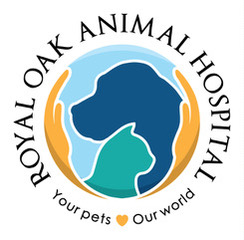Library
-
Cats are not completely color blind, as they can see yellow and blue, as well as shades of gray. Their eye structure allows them to see better in dim light compared to people. Near-sightedness is common among cats.
-
E-cigarettes are battery-operated devices used to create and inhale an aerosol composed of nicotine, flavorings, and other chemicals. If a companion animal ingests an e-liquid, signs of nicotine poisoning occur rapidly. The nicotine associated with e-cigarettes, even without tobacco, poses a serious health threat to dogs and cats.
-
Many liquid potpourri products and essential oils are poisonous to cats, including oil of cinnamon, citrus, pennyroyal, peppermint, pine, sweet birch, tea tree (melaleuca), wintergreen, and ylang ylang. Both ingestion and skin exposure can be toxic.
-
Female cats have their first estrous (reproductive or heat) cycle when they reach puberty (sexual maturity). Each cycle consists of several stages; the stage called estrus refers to when the female can become pregnant. This handout explains the cycle stages and signs.
-
Open and honest communication with your veterinarian and veterinary healthcare team throughout your cat's life lays the foundation for effective communication when that cat's life begins drawing to a close. Discussion with your veterinarian will clarify any specific medical implications of your cat's disease that can serve as benchmarks to suggest that euthanasia should be considered. Most often, euthanasia is provided at the veterinary practice or in your home. The veterinary healthcare team will be an important partner as you negotiate the difficult days and decisions leading up to your cat's peaceful passing.
-
Losing weight is difficult. Feeding a veterinary prescription weight-loss food is important, but energy expenditure is also important. Encouraging your cat to exercise can help to increase energy expenditure and can complement a successful weight-loss program.
-
Proprioception is the ability to know where your body is in space. This is what helps reduce falls and injury. Proprioception may be lost suddenly through spinal cord trauma, or it may be reduced with age, joint disease (osteoarthritis), or other orthopedic or neurologic disease. Some specific controlled exercises that can improve proprioception are discussed. Any exercise plan needs to be formulated by a veterinary rehabilitation therapist to avoid injury.
-
Obesity occurs when a cat consumes more calories than they expend. Therefore, managing obesity in cats often requires both dietary changes and increased exercise/activity. There are several methods for increasing activity in cats, including play, using cat trees and climbing structures, outdoor enclosures, and intentional, active feeding practices. Each of these can be beneficial in promoting weight loss.
-
You’ve probably heard lots of funny cat anecdotes; about how you don’t own them…they own YOU; how they feel superior to everyone, especially dogs; that they expect to be treated like royalty. If you are considering a feline acquisition, first consider this: lots of those remarks are true! This handout explains the other factors to consider in selecting the cat most likely to choose your family, too.
-
The goal of feeding growing kittens is to lay the foundation for a healthy adulthood. Growing kittens need higher amounts of all nutrients in comparison to adult cats, but excess energy and calcium can create serious problems. Work with your veterinary healthcare team to give your puppy the best chance for success at growing into a healthy adult cat.


